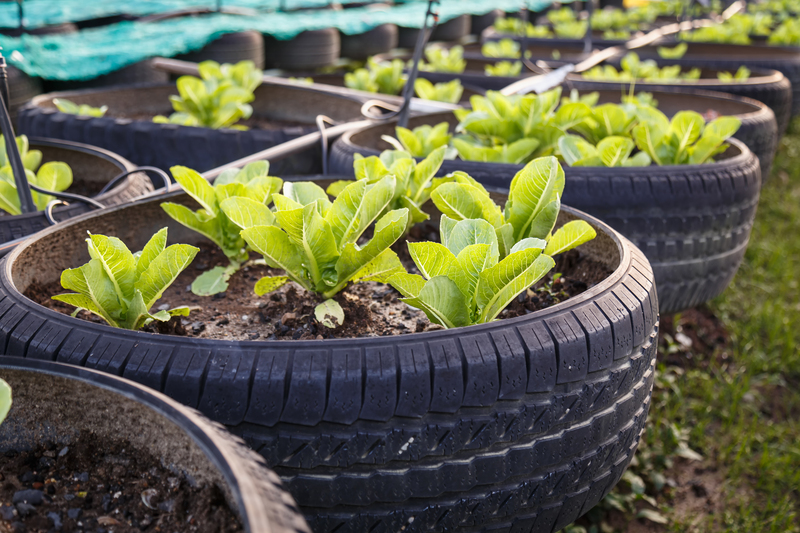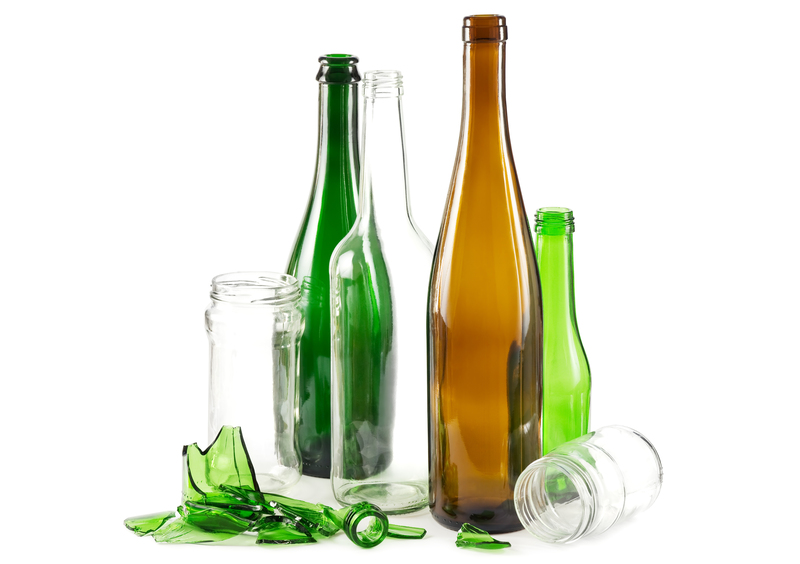Navigating the Plastic Maze: Which Types of Plastic to Avoid for a Healthier Life
Plastic is everywhere -- from food packaging and toys to electronics and water bottles. But not all plastics are created equal. Some may leach hazardous chemicals into our foods, water, or environment. Understanding which plastics to avoid is crucial for making safer choices for ourselves, our loved ones, and the planet.

Understanding the Plastic Numbers: Decoding the Resin Identification Code
When you look at the bottom of a plastic container, you'll notice a triangle made up of arrows with a number inside. This number is called the resin identification code (RIC) and helps you determine the type of plastic and its recyclability. But more importantly, it can also help you recognize plastics that may pose health and environmental risks.
- 1: PET or PETE (Polyethylene Terephthalate)
- 2: HDPE (High-Density Polyethylene)
- 3: PVC (Polyvinyl Chloride)
- 4: LDPE (Low-Density Polyethylene)
- 5: PP (Polypropylene)
- 6: PS (Polystyrene)
- 7: Other (includes Polycarbonate, BPA, and mixed plastics)
Each of these plastics has unique characteristics. However, some are linked to greater health hazards and should be minimized or avoided if possible.
Why Should We Be Concerned About Plastics?
Plastics contain a variety of chemical additives such as plasticizers, flame retardants, and colorants. Some of these additives can migrate into food, water, or skin, especially when containers are heated, scratched, or exposed to fatty foods. Long-term exposure to certain chemicals, such as Bisphenol A (BPA), phthalates, and styrene, has been associated with hormonal disruption, reproductive issues, and increased cancer risks.
But that's not all. Improper disposal of plastics harms wildlife and pollutes ecosystems for centuries, since most plastics are not biodegradable. The key lies in recognizing the dangers and navigating the plastic maze confidently.
Which Plastics Should You Avoid? The Top Culprits
1. #3 PVC (Polyvinyl Chloride) -- "The Poison Plastic"
- Common Uses: Cling wrap, pipes, shower curtains, children's toys, some food packaging.
- Main Concerns: Contains phthalates, lead, and other toxic additives. When heated or incinerated, releases dioxins--some of the most harmful pollutants known.
- Health Risks: Potential hormone disruption, increased risk of cancer and development issues in children.
Advice: Avoid using PVC containers, especially for food storage or preparation. Choose alternatives marked with safer plastic codes or opt for glass and metal.
2. #6 PS (Polystyrene) -- "Styrofoam and Single-Use Trouble"
- Common Uses: Disposable cups and plates, takeout containers, egg cartons, packing peanuts.
- Main Concerns: Contains styrene, a possible human carcinogen. Polystyrene items are rarely recycled and persist in the environment for centuries.
- Health Risks: Styrene exposure can affect the nervous system, cause headaches, fatigue, and has potential links to cancers.
Advice: Say no to Styrofoam. Bring your own reusable containers and avoid purchasing food in polystyrene packaging.
3. #7 Other (Especially Polycarbonate & BPA-Containing Plastics)
- Common Uses: Water bottles, baby bottles, large water jugs, some reusable containers and kitchenware.
- Main Concerns: Often contains Bisphenol A (BPA), a known endocrine disruptor. Some "#7 Other" plastics are made from new, less tested chemicals.
- Health Risks: Linked to hormone disruption, infertility, heart disease, diabetes, and certain cancers.
Advice: When in doubt, steer clear of plastics labeled "#7 Other". Choose plastics specifically labeled "BPA-free" or use stainless steel, glass, or ceramic alternatives instead. Beware that "BPA-free" doesn't always mean completely safe, as similar chemicals (like BPS) are sometimes used as substitutes.
Plastics that Are Considered Safer (But Still With Caveats)
Although complete avoidance of plastic is ideal, it may not always be realistic. The following plastic types are generally regarded as safer for food contact:
- #1 PET or PETE (Polyethylene Terephthalate): Commonly used in water and soda bottles, and most food jars. Generally considered safe for single use, but avoid reusing or exposing to heat.
- #2 HDPE (High-Density Polyethylene): Found in milk jugs, detergent bottles, and toys. Low risk of leaching, and widely recycled.
- #4 LDPE (Low-Density Polyethylene): Used in bread bags, frozen food bags, and some soft food containers. Minimal leaching risk.
- #5 PP (Polypropylene): Used in yogurt cups, straws, bottle caps, and food containers. Generally stable and heat-resistant, often microwave-safe (but still best to avoid microwaving plastic).
Note: No plastic is entirely risk-free. Even "safe" plastics can leach additives depending on their formulation, how they are used, and their exposure to heat or sunlight.
How to Identify Problematic Plastics at Home
- Check the recycling triangle: Look for #3 (PVC), #6 (PS), or #7 (Other).
- Notice any scratching, cloudiness, or wear: Damaged plastics may leach chemicals more readily.
- Smell test: Some plastics release strong odors when new or when heated -- a sign of volatile chemicals.
- Avoid plastics for hot foods & liquids: Never microwave or pour boiling liquids into plastic unless the item is specifically rated for high heat.
Practical Tips for Navigating the Plastic Maze Every Day
- 1. Choose alternatives whenever possible: Invest in glass, stainless steel, or ceramic food storage, bottles, and cookware.
- 2. Ditch single-use plastics: Carry your own reusable bags, containers, and cutlery.
- 3. Avoid heating food in plastic: Transfer food to non-plastic containers before microwaving or storing hot leftovers.
- 4. Be picky with children's items: Babies and children are especially vulnerable. Look for BPA-free, phthalate-free, lead-free products, or use non-plastic options for bottles, dishes, and toys.
- 5. Watch for greenwashing: Some plastics are labeled "biodegradable" or "compostable" but may not break down except in industrial composting facilities.
- 6. Support plastic bans and better legislation: Vote with your wallet and your voice for policies and products that minimize plastic waste.
Hidden Sources of Problematic Plastics to Avoid
Don't forget: Dangerous plastics can lurk in unexpected places, not just food packaging.
- Receipts: Many thermal paper receipts contain BPA. Decline receipts if possible, and wash hands after handling.
- Dental sealants and composites: Some dental work materials contain or release BPA derivatives.
- Water supply pipes: Old pipes or plumbing fixtures may be made from PVC or have questionable resins.
- Children's toys: Avoid soft, flexible plastics (like vinyl) unless certified as phthalate-free.
- Personal care products: Check for microplastics (like "polyethylene" or "polypropylene" beads) in toothpaste and exfoliants.
Healthier Substitutes and Brands Leading the Way
Switch to Sustainable Materials
- Glass storage containers
- Stainless steel water bottles and lunch boxes
- Silicone baking mats and lids (look for food-safe, certified brands)
- Natural fiber lunch wraps (cotton, beeswax-coated fabric)
- Bamboo utensils
Brands Making a Difference
- Life Without Plastic - Wide range of zero-plastic alternatives
- Pyrex - Iconic glass storage and bakeware
- Klean Kanteen - Stainless steel bottles and containers
- Stasher - Reusable silicone storage bags
- Lifefactory - Glass water bottles with silicone sleeves
What the Research Says: Effects of Toxic Plastics
Numerous studies warn about the dangers of plastics that leach endocrine-disrupting chemicals. According to the Endocrine Society, even low-dose, chronic exposure can have far-reaching health effects across generations.
The World Health Organization highlights links between early-life exposure to substances like BPA and adverse developmental, reproductive, neurological, and immune effects in both humans and animals.
- BPA and phthalates: Detected in the urine of nearly every tested individual worldwide.
- Microplastics: Have now been found in drinking water, table salt, and even the air we breathe--though the long-term effects are still being studied.
Frequently Asked Questions About Navigating the Plastic Maze
Is #1 PET Safe?
PET is considered safe for single use, but repeated refilling and exposure to heat can break down the material and lead to chemical leaching. It's best not to reuse disposable PET water bottles.
Are "BPA-Free" Plastics Always Safe?
Not necessarily. Some products replace BPA with BPS or other substitutes whose risks are less well-known. The safest route is to minimize all plastics, especially for food and drink storage.
Is it safe to microwave plastic containers marked "microwave-safe"?
Microwave-safe just means the container won't melt -- it doesn't guarantee no chemical migration into your food. To stay on the safe side, use glass or ceramic instead.
How can I support plastic-free initiatives?
- Support companies and products reducing plastic usage
- Advocate for bans on single-use plastics
- Volunteer for local cleanups and recycling drives
- Educate your community about plastic hazards

Conclusion: Be a Conscious Consumer and Navigate the Plastic Maze Safely
The plastic maze can seem daunting, but by knowing which plastics to avoid (#3 PVC, #6 PS, #7 Other), we can make healthier and more eco-friendly choices daily. Favor glass, stainless steel, and safe plastics (#2, #4, #5) where needed, and always think twice before bringing more plastic into your life.
Our health and the health of our planet depend on it. By making informed choices, reading labels, and seeking out alternatives, you'll be mastering the art of navigating the plastic maze -- and inspiring others to do the same.